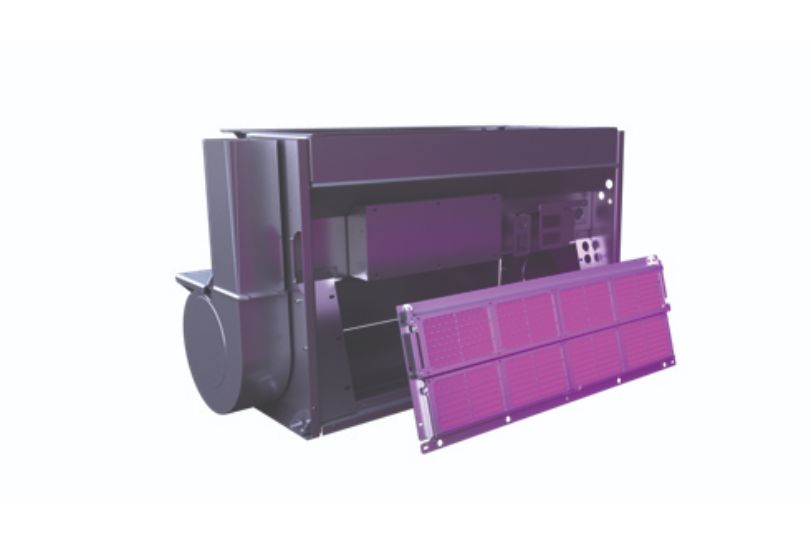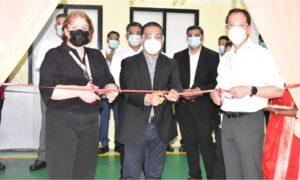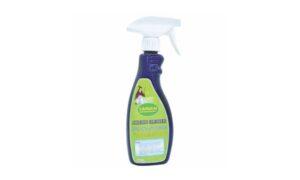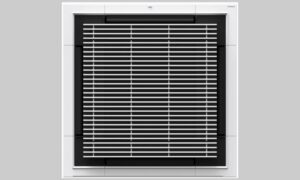Thermo King’s air quality solution uses active purification technology to inactivate viruses and other microbes and remove harmful chemicals.
Numerous indoor air quality (IAQ) products are available in the market today. The products span a wide range of technologies, have an expansive range of properties, and deliver a large array of performance outcomes, even within the same technology category. The pandemic raised awareness about the indoor air quality, including aspects related to pathogens like the SARS-CoV-2 virus, and other contaminants such as dust, allergens, volatile organic compounds, etc. Thermo King has recognised the need for comparative evaluation of IAQ technologies in the bus HVAC marketplace and, in keeping with the CDC guidance, has recently devoted very significant resources to conduct expansive comparative testing of various IAQ technologies. To identify a product that is safe, effective, and suitable for the transit environment, it is important to understand the specific CDC and ASHRAE guidelines regarding indoor air quality technologies.
Proven effectiveness
The CDC recommends that in selecting an indoor air quality product, consumers should request testing data that quantitatively demonstrates a clear protective benefit and occupant safety under conditions that are consistent with the intended use. It is also recommended that this data be from independent, third-party sources. In keeping with CDC guidance, Thermo King, a strategic brand of Trane Technologies, conducted extensive comparative in-chamber testing at an independent laboratory. The testing consisted of a modeled transit bus cabin and simulated airflows, which enabled a fact-based evaluation of IAQ technologies for transit bus HVAC applications. Representative airflow, testing chamber size, and scaling of the air quality device are critical to understanding how the technology functions in the desired application. Successful modeling cannot be replicated accurately in small test chambers. Through this independent third-party testing, the air purification solution was validated as safe, effective, and suitable for the transit environment. Thermo King subsequently commissioned independent third-party tests for our Air Purification Solution in an actual transit bus. The in-bus tests were conducted in May 2021 by the same independent third party as the original in-chamber tests, validating the test results.
Fully contained system in bus HVAC unit
The Air Purification Solution is a fully contained system located within the existing bus HVAC unit. As air is circulated from the passenger cabin into the HVAC system, it passes through a graphene-enhanced PCO device. Aside from testing, there are also numerous safety factors to consider when evaluating IAQ technologies. IAQ technologies should not have side effects that could introduce new or increased safety risks for passengers and drivers. For instance, some products use UV light at wavelengths and power levels that can cause harm to humans. Other UV technologies use mercury vapor lamps to emit UV light, which have the risk of leaking potentially dangerous levels of mercury into the passenger area.
Thermo King’s Air Purification Solution utilises a UV-A LED light array that produces a wavelength that is much safer for humans (e.g., skin and eyes) and for materials (e.g., plastics) compared with a UV-C light. Experts also note that if UV-C light is being used, it is important to ensure that it is properly contained, and humans are not exposed to it. Thermo King’s UV-A LED light array is mounted behind the return air grill and under a filter. It is also directed away from the passenger area of the transit bus. Furthermore, the use of LED lights helps protect passengers from safety risks in case of light damage, and offer extended component life spans, lasting as much as five times longer than other solutions.
Another side effect of some IAQ technologies to consider is the generation of ozone. Due to the risks associated with ozone exposure, the CDC cautions that ozone should never be used for disinfection in occupied spaces. To ensure the selection of an air disinfection device that will not expose passengers to ozone, the CDC recommends air disinfection devices that comply with the UL 2998 standard certification, which validates that no ozone is produced. Additionally, ASHRAE Standard 62.1-2019 Ventilation for Acceptable Indoor Air Quality requires that air-cleaning devices comply with the UL Standard 2998 and that air cleaning devices shall be listed and labeled in accordance with such.
Thermo King’s Air Purification Solution is UL 2998 certified, meaning it does not generate ozone, a common byproduct of many air purifiers. What’s more, Thermo King’s Air Purification Solution oxidises volatile organic compounds (VOCs), which can potentially be harmful to passengers, helping to create a more pleasant and comfortable passenger experience. All testing took place at an independent lab and the results were reviewed by a third party ASHRAE fellow and member of the ASHRAE Epidemic Task Force consultant for confirmation. All technologies were evaluated in consideration of three main criteria:
- Safety for use around passengers and transit employees.
- Suitability for use in a transit bus environment,
- Efficacy in the reduction and inactivation of pathogens (both airborne and surface-bound).
The tests were performed by an independent lab (LMS Technologies) in a 1,007 cubic foot chamber, which is one of the largest of its kind.
Cookie Consent
We use cookies to personalize your experience. By continuing to visit this website you agree to our Terms & Conditions, Privacy Policy and Cookie Policy.















